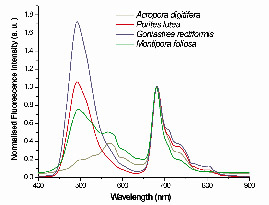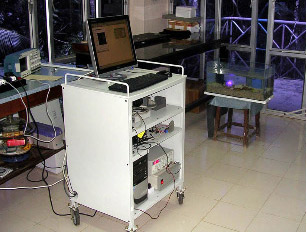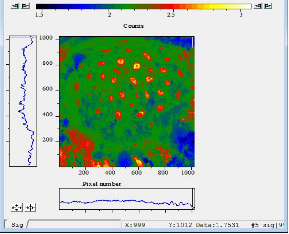
Laser-induced Multispectral Fluorescence Imaging of Corals

Fig. 1. LIF spectra of different species recorded in situ from corals in Palk Bay normalized to chlorophyll fluorescence peak intensity at 680 nm
Coral reefs are one of the most productive ecosystems on Earth. They are also the most sensitive among ecosystems to long term climate change. Around the world corals are under threat from a multitude of sources. Depending on their location, reefs have been damaged directly through harmful practices such as coral mining, overfishing, pollution, haphazard coastal development and even by careless pleasure diving by tourists. Lakshadweep archipelago, which consists of 12 atolls and 3 reefs, is also threatened by the change in environmental condition due to alterations in salinity, rise in seawater temperature, rise in carbon dioxide content of the seawater, pollution, overfishing etc. Understanding the impact of environmental changes on coral reefs by fluorescence imaging enables us to obtain knowledge on coral growth and their adaptation under ambient conditions, without disturbing their natural habitat.
In situ LIF measurements of corals such as Porites lutea, Acropora digitifera, Montipora foliosa and Goniastrea rectiformis were carried out using the LIFRS system from a boat in the Palk Bay near Rameswaram. The LIF spectra of corals was found to consist of peaks at 485, 550, 575, 685 and 730 nm that varies in intensity and position among coral species (Fig. 1). Change in fluorescence emission intensity and peak position with stress points to the role of host pigments in coping with stress. Our study has shown that coral species could be identified and stress induced bleaching and mortality could be detected based on fluorescence spectral signatures.
Laser-induced multi-spectral fluorescence imaging system (LIMFIS) was developed to record fluorescence images of corals (Fig. 2). Diode-pumped solid-state (DPSS) laser (457 nm) operated in the pulsed mode at 20 kHz is used as the excitation source. The expanded laser beam illuminates corals on the ocean floor and an intensified CCD camera records the fluorescence images through a liquid crystal tunable filter (LCTF) and camera lens. The LCTF is tuned to the coral emission peaks sequentially to record the fluorescence images and coral health-sensitive information can be obtained from the image intensity ratios (Fig. 3).

Fig. 2. Laser-induced Multi-spectral fluorescence Imaging System (LIMFIS) developed for remote sensing of corals

Fig. 2. Laser-induced Multi-spectral fluorescence Imaging System (LIMFIS) developed for remote sensing of corals




 RTI Act
RTI Act
